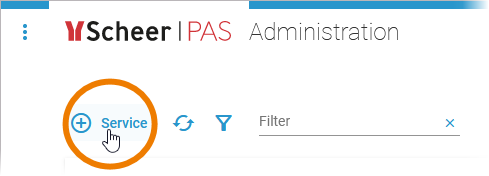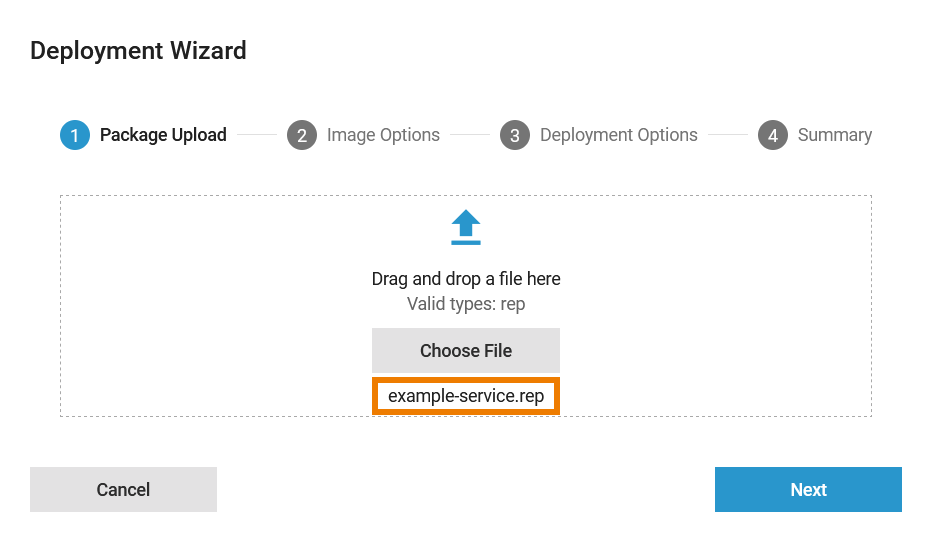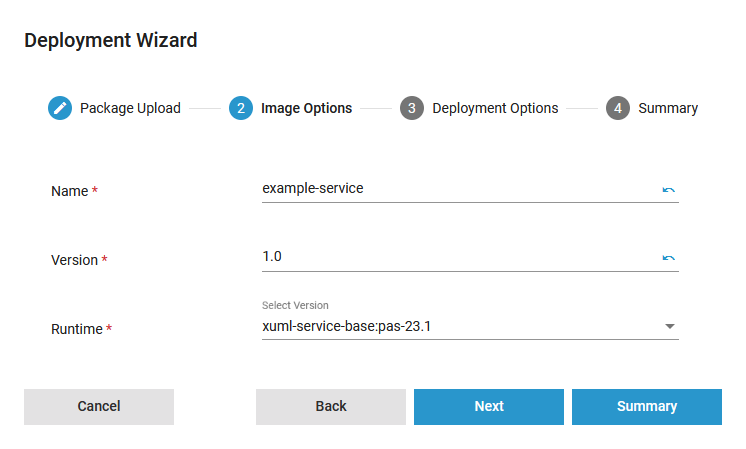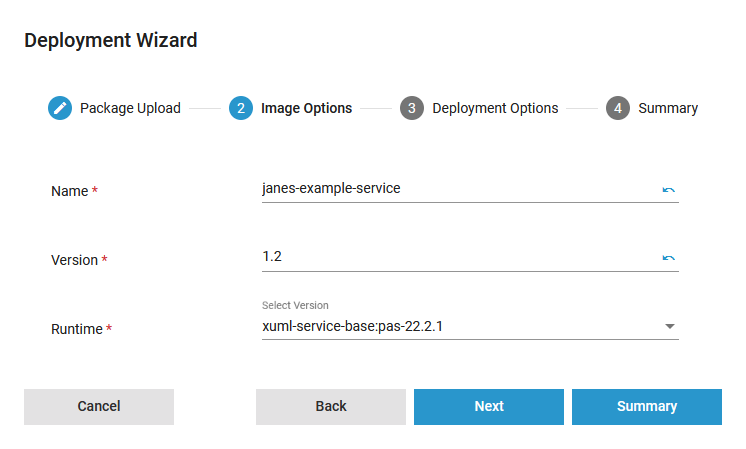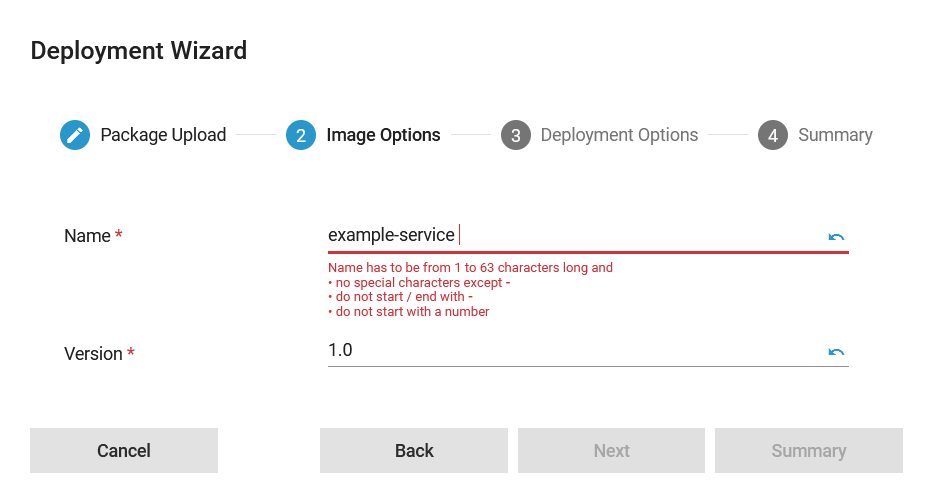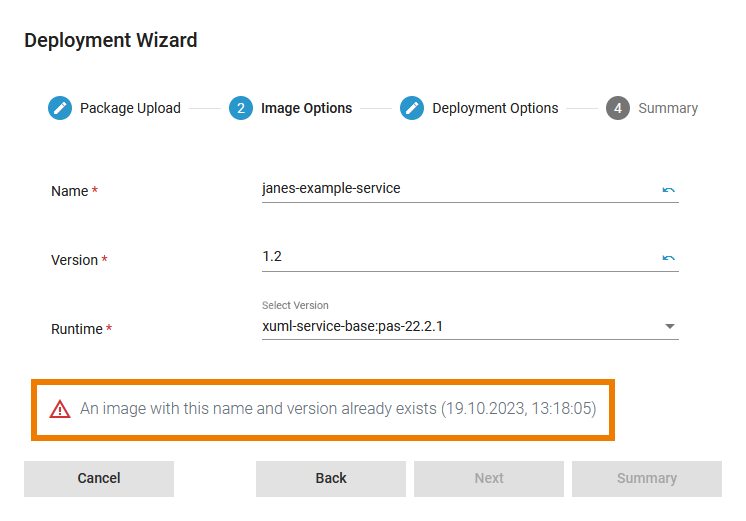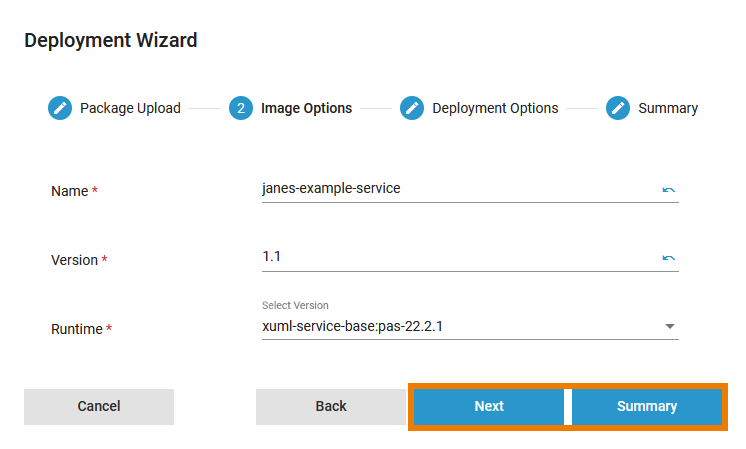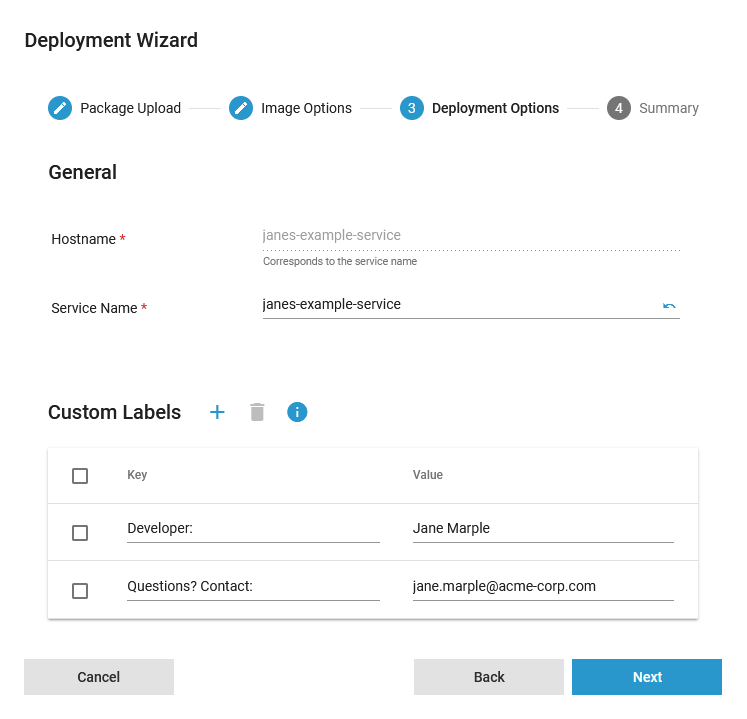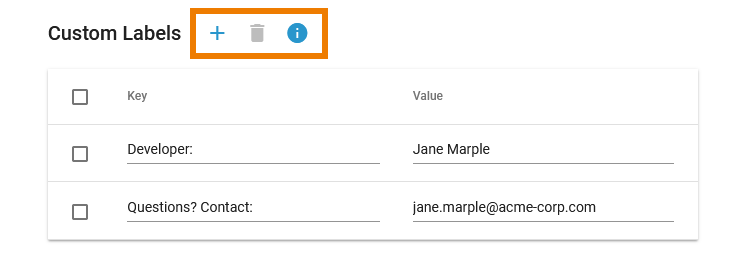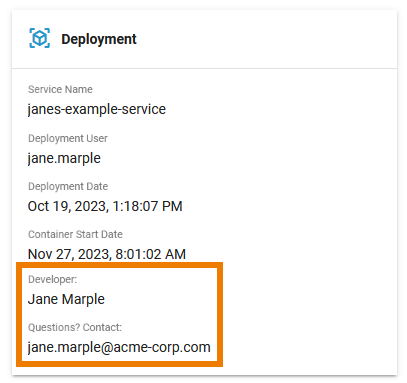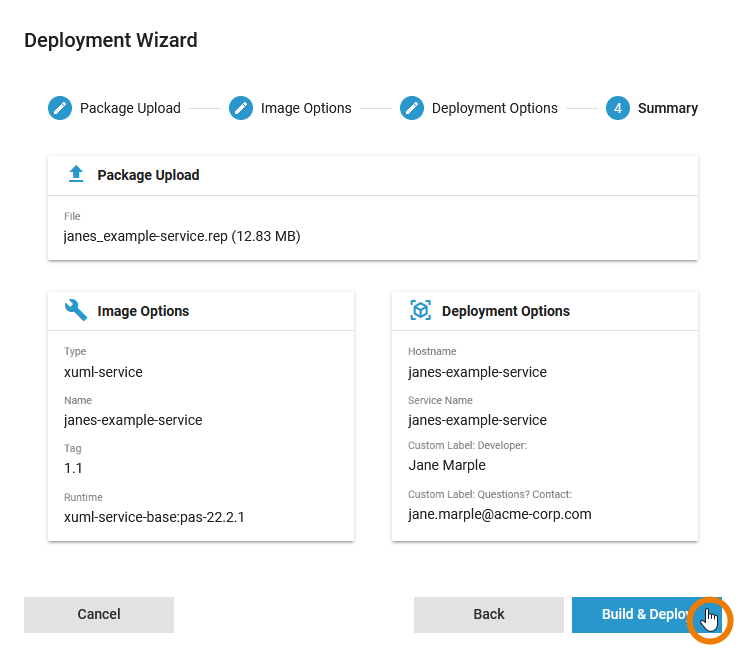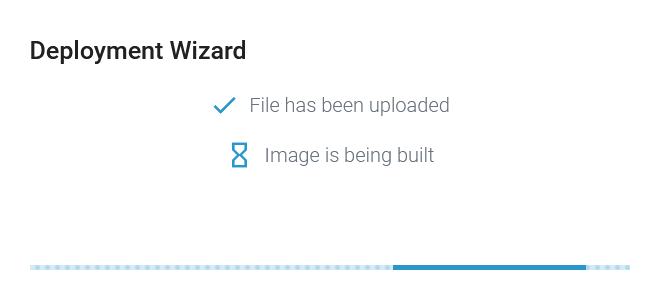Versions Compared
Key
- This line was added.
- This line was removed.
- Formatting was changed.
With the deployment wizard, Scheer PAS provides a tool to deploy xUML services into a as Docker container and Kubernetes workload. All you need is the repository (.rep file) of the service.
To access the deployment wizard, open the Administration.
| |||||||||
| Use icon | ||||||||
| The wizard opens in a pop-up window. As soon as you have selected the .rep file of the service, the wizard guides you through the necessary steps to create a containerized an xUML service.
|
Step 1: Package Upload
| First, select the .rep file of the service you want to deploy. You can use the button Coose File to search your computer or drag and drop the file within the framed box. The name of your service is then displayed below the button. |
| Use the select field Namespace to choose the profile where the .rep file is deposited temporarily. The file will be deleted when the wizard is closed. A selection list is displayed, if you have more than one namespace assigned to your user. Click Next to continue. |
Step 2: Image Options
| Anchor | ||||
|---|---|---|---|---|
|
| In step 2, you can adapt the image options. All displayed fields are mandatory.
| |||||||
| The image options are:
Info |
| ||||||
| Various input restrictions apply to field Name. If you enter invalid characters, corresponding validation notes are displayed.
| |||||||
| An image must have a unique designation. You will get a warning message if an image with the same name and version already exists. In that case, you must at least change name or version of the image. | |||||||
| When all mandatory fields have been filled, you have two options:
|
Step 3: Deployment Options
| Anchor | ||||
|---|---|---|---|---|
|
| Step 3 is optional and allows you to adapt the deployment options. It is divided into several different sections: | |||||||||||||
| GeneralIn thissection, you can find the following options:
| |||||||||||||
| Restart Options | Description | unless-stopped (default) | Restarts the container always if it stops, except when the container is stopped (manually or otherwise). It is then not restarted even after the Docker daemon restarts||||||||||||
|---|---|---|---|---|---|---|---|---|---|---|---|---|---|---|
| on-failure | Restarts the container everytime if it exists due to an error. | |||||||||||||
| none | Container is not automatically restarted. |
|
| |||||||||||
| Custom (Container) LabelsUse this option to add technical labels for the container. The labels are added to the container and are also displayed later |
| Custom LabelsIn thissection, you can mark the service with additional short information. After deployment, the labels will be visible in the service details.
| |||||||||||
| After deployment, the labels are also visible in section Deployment in the service details. |
Step 4: Summary
| Anchor | ||||
|---|---|---|---|---|
|
| In the last step, you can check all deployment-related information again. Three sections are summarizing the information provided:
If you want to adapt some of your inputs, use the Back button or click on one of the steps in the navigation to access it directly. Click Build & Deploy to start the deployment process. | ||||||||
| The wizard starts the deployment and keeps you updated about the running deployment steps. This information is read-only, you cannot intervene in the process now. | ||||||||
| You can take action again when the deployment has been completed.
|
| Panel |
|---|
| Otp | ||||
|---|---|---|---|---|
|
| ||
|
| Panel | ||
|---|---|---|
| ||
